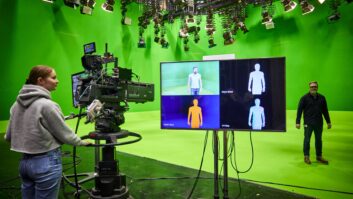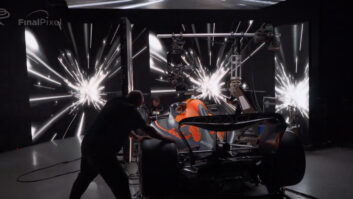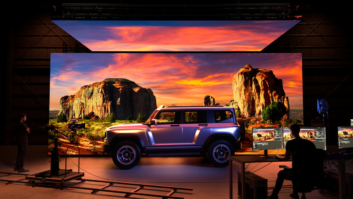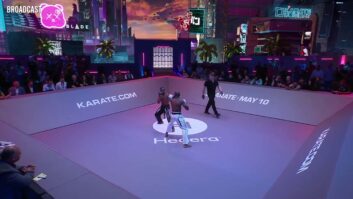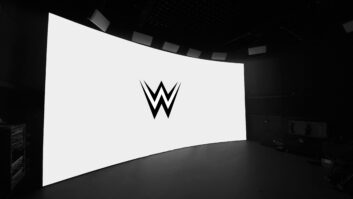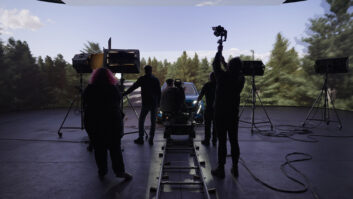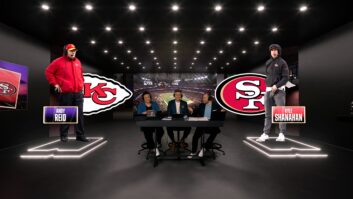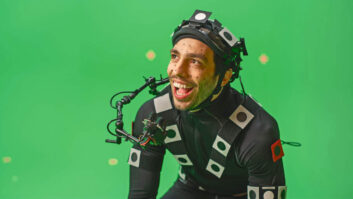ITV4 will bring together some of the most famous Grand National winners in a UK TV first when it broadcasts a virtual Race of Champions on Friday evening.
The race will be part of a preview show that also includes the Virtual Grand National, a CG-rendered race featuring all of this year’s competitors.
Both races have been create by Inspired Entertainment, the UK market leader in virtual sports.
Inspired got involved after discussion with the Jockey Club of Great Britain, the owners of Aintree race course. The company already creates virtual horse racing, but was excited to have the opportunity to create something with the look and feel of the iconic horse race.
“Our standard horse racing product features eight, 12, 16 runners and lasts about two or three minutes,” explains Steve Rogers, chief commercial officer, digital games, at Inspired Entertainment. “The Grand National is obviously nine to 10 minutes long, it has 40 horses, it has fallers, it’s got fences collapsing.
“We spoke to the Jockey Club and said we’d like to create a feature race and have two concepts. One is a Virtual Grand National which is like a predictor race where you put the runners and riders from Saturday’s race into our software and see what it does with the outcome, see how close it can get to the actual result.
“Then we had the idea of creating a different version which actually pitted the best runners and riders of yesteryear against each other, so Amberleigh House versus Red Rum versus Mr Crisp versus whatever,” Rogers continues. “It’s a fascinating concept.”
The team at Inspired began by creating a virtual Aintree. They filmed the Grand National course the day after 2016’s race. “We went there and filmed the track using drone cameras, tracking cameras and cherry pickers, and we filmed every aspect of Aintree as close as it is to race day,” explains Rogers.
“We then build that into a 3D environment. So essentially we’ve got full camera freedom around this virtual Aintree, there’s no horses obviously at this point. Then we remove all the fences, so take out the real fences and replace them with our virtual fences because they need to be able to smash, fall down and break apart as the virtual horses go over them. Then we build the virtual elements back in. So now you have a real environment but with virtual components within it.”
Having created the course, the Inspired team then had to create the horses, which meant they changed their standard virtual horse model and running cycles. But that wasn’t so easy: “The problem was our horses run in a sprint and obviously a horse can’t sprint for 10 minutes around the Grand National track,” smiles Rogers. “We had to change our horse algorithms so the horses’ movement would change over the life cycle of the race; the horse would tire towards the end.”
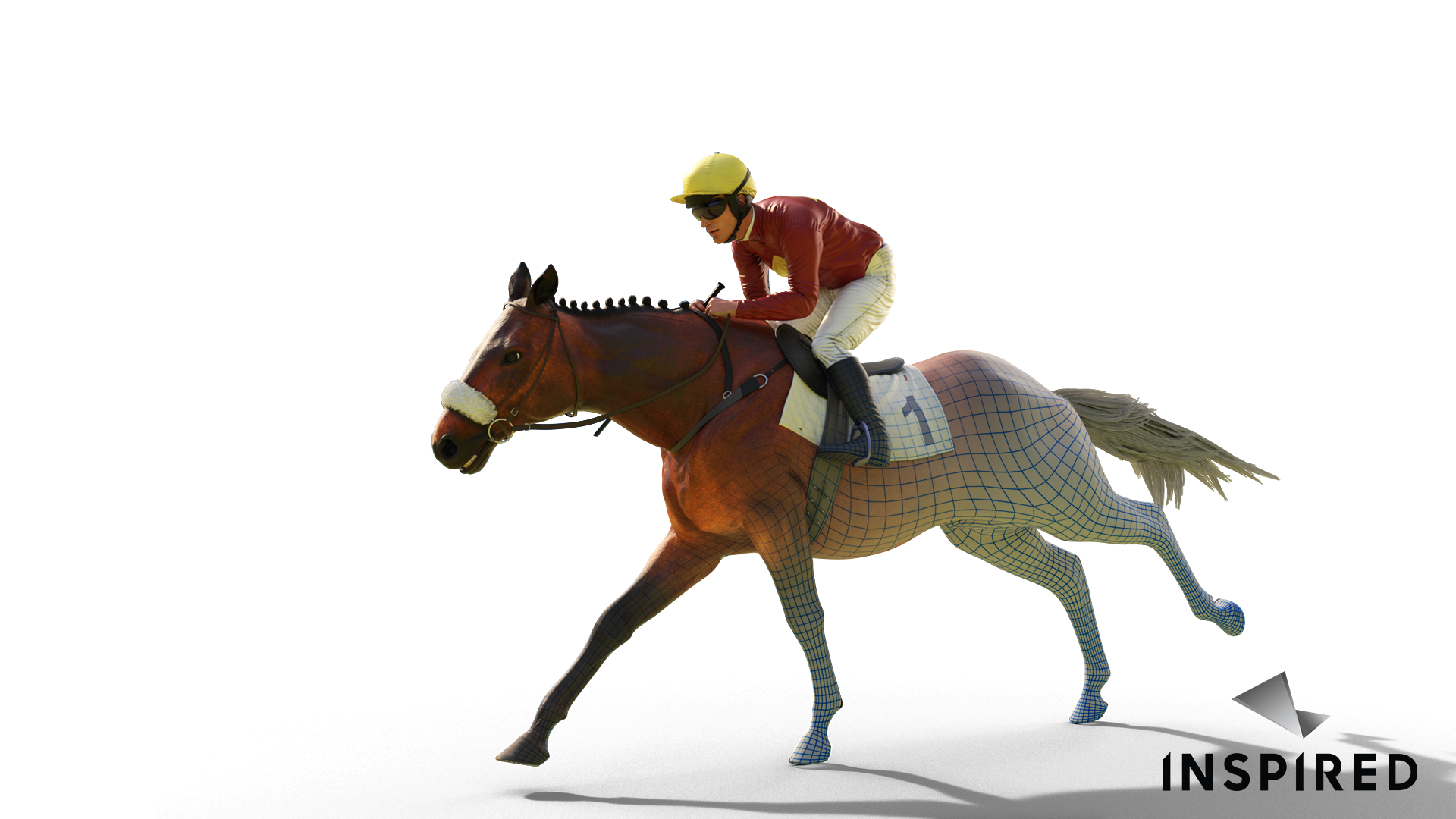
Inspired didn’t just think about the horses that will make it round the two laps of the Aintree course, they have also included fallers, riderless horses and even people who patch the iconic fences back together once the horses have jumped over them.
Key to the development of the Race of Champions has been input from jockeys who have made it round the 4-mile, 514-yard course. The team at Inspired sat down with the likes of AP McCoy, Richard Pittman, Katie Walsh and various people at Aintree itself. “It went through various iterations so there was a fairly lengthy development cycle and then we came up with something that looks like the Grand National and we replicated the camera angles,” says Rogers.
The horses themselves have been built with artificial intelligence within the model: “That means they can’t run into each other,” he explains. “They have a forcefield around them in terms of where they move in respect of each other. That was all built for the Grand National product.”
So, in terms of the race itself how does Inspired determine the result? Surely everyone would expect Red Rum, who won the National three times in the 1970s, to be the obvious winner? “It is randomly determined but we are conscious of the skill of the horses. So if you’re running the Race of Champions you obviously know that Red Rum’s statistics stack up there,” says Rogers.
“Obviously some of these horses may have never raced against each other, so we had to look at their statistics. We also had to set the going, so we said ‘let’s assume to the going is soft’ and then we looked at how all the horses ran over soft ground. We entered as many statistics as we could into the model, gave them respective probabilities and then the software determines the outcome and then our graphics render that.”
ITV’s programme won’t be broadcast live, which means the Race of Champions also won’t be run live. “We’re leaving it as late as possible to create the race itself,” says Rogers. “We’ve got everything to produce a result for both the Virtual Grand National and the Race of Champions and we’ll deliver them to ITV as pre-recorded elements.” Post production on the Virtual Grand National is being provided for ITV by Timeline Television.
The programme will mark the first time a mainstream broadcaster has shown a virtual sport. Does Rogers see a time when vsports (as it’s known) becomes as popular as esports? “I think virtual sports is very compelling and we obviously try very hard to make our content look as life-like as possible,” he says. “I think there is certainly an opportunity.
“There is demand for sport all day every day now. Football isn’t broadcast every day, American football only happens two days a week, so there’s pent up demand for sport. So alongside betting as well, I do think there is an opportunity in the future to have more mainstream coverage for virtual sports.”
The Virtual Grand National will be broadcast on ITV4 at 8pm on 13th April.
